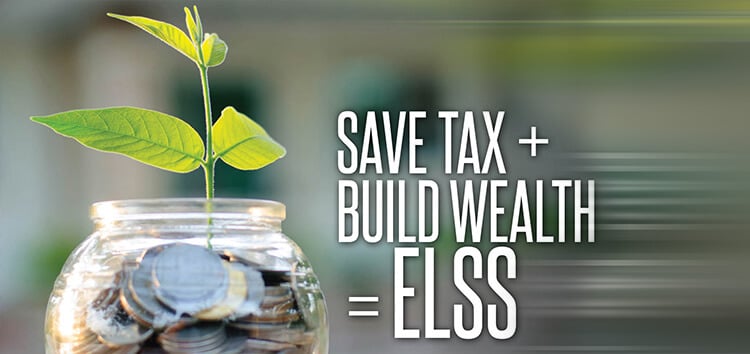
Over the last few years, the equity linked savings schemes have emerged as a very attractive tax saving option for Indian investors. The beauty of this product is that apart from saving tax for you it also creates wealth in the long term. An ELSS has a 3-year in period, which is much lower compared to other Section 80C products like PPF, NSC, long-term deposits etc. Here are 4 things you need to understand about ELSS before making your investment and tax saving decision…
The tax break substantially enhances post-tax returns for ELSS…
It would be illustrative to understand this with an example. Let us assume that the NAV of an ELSS is Rs.30. An investor who has Rs.150,000/- to invest under Section 80C can buy 5000 units of the ELSS scheme. As he is in the highest tax bracket, he will get an exemption of 30% on this investment. Remember, we are ignoring surcharge and cess to simplify the case study. So, on an investment of Rs.150,000, he gets a tax rebate to the extent of Rs.45,000/-. Hence his effective investment in the ELSS comes down to just Rs.105,000. Let us further assume that at the end of 3 years the NAV has appreciated to Rs.60. Therefore, the value of his investment has doubled from Rs.150,000/- to Rs.300,00 in 3 years, or roughly 24% CAGR returns over 3 years.
But, hold your breath, there is much more excitement in store. Remember, the investor had received a tax rebate of Rs.45,000 in the year of investment. Therefore, it is Rs.105,000 that has grown to Rs.300,000 in a span of 3 years. So effectively, in post tax terms, his money has not just doubled but has almost tripled via the ELSS route. That is the big difference that a tax break can make for an ELSS investment.
Why ELSS tends to outperform normal equity funds?
At a personal portfolio level, it has been observed that ELSS funds tend to outperform normal diversified equity funds although both invest in the same asset class. There are 2 possible reasons for the same. Firstly, an ELSS has a 3 year lock in period. Thus an investor who gets into an ELSS has to hold on to the ELSS fund for a minimum period of 3 years. This infuses a certain degree of investing discipline and he also eschews the normal trader’s tendency to enter and exit whenever they see the investment yield profit. Secondly, since a chunk of the funds are locked in, the fund manager also has the leeway to take more long term decision as he does not have to worry about maintain sufficient liquidity to handle redemptions. This creates a situation where in the fund manager also takes a long term view of the AUM of the ELSS. That long term discipline, probably, explains why the ELSS tends to outperform as an asset class.
Adopt a SIP approach to ELSS, rather than bunching purchases…
Interestingly, most investors pay their taxes at regular intervals but plan for their tax-related investments towards the last quarter of the year. It may actually make more sense to align your tax-related investment strategy to your regular tax outflows. When you spread your ELSS investment over the full year, it gives you two distinct advantages. As your purchases are phased, it does not put undue pressure on your liquidity situation. Secondly, this gives you the benefit of rupee cost averaging. Buying your entire quota of ELSS at one point of time may mean that you may be missing out on the best price. An SIP approach automatically ensures that you get as close to getting the best price as possible. Over a long period of time, that reduces your effective cost and enhances the yield on your ELSS investment.
Why ELSS is different and what makes it attractive?
We have already seen the tax and return advantages that an ELSS offers. There are some additional advantages that ELSS offers on a relative basis compared to other tax-saving instruments. Firstly, unlike other instruments like PPF, NSC and Long term deposits, an ELSS is a long-term wealth creator due to its consistent equity exposure. Secondly, ELSS currently enjoys the benefit of being Exempt, Exempt, Exempt (EEE). What this means is that you get tax benefit when you invest in ELSS, the dividends received by you are tax free and there are no capital gains at the time of redemption. While other asset classes like PPF are also covered by the EEE advantage, this may not last much longer considering that it is distorting the debt yield curve in India. In case of equities, the worst case may be that the definition of long term may be enhanced to 3 years in the forthcoming Union Budget, which will anyways make no difference to the ELSS. That is what makes ELSS doubly attractive at the current juncture.
An ELSS offers the ideal combination of enhanced returns, controlled risk and 3 levels of tax benefits. With the government likely to be liberal with tax benefits for retail investors in the 2017 budget, it may mean happy days for ELSS!
Published on: Feb 4, 2017, 12:00 AM IST
We're Live on WhatsApp! Join our channel for market insights & updates